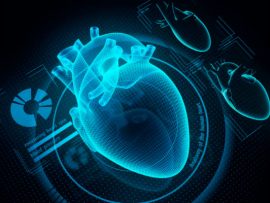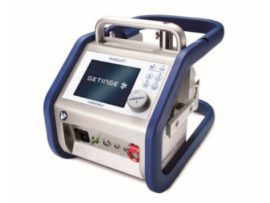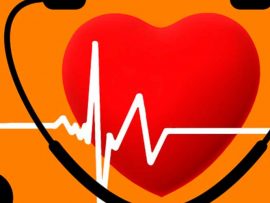Abstract Background: The mortality of critically ill patients with COVID-19 is high, particularly among those receiving mechanical ventilation (MV). Despite the high number of patients treated worldwide, data on respiratory..
WeiterlesenAbstract Objectives: Refractory postcardiotomy cardiogenic shock complicating cardiac surgery yields nearly 100% mortality when untreated. Use of venoarterial extracorporeal membrane oxygenation for postcardiotomy cardiogenic shock has increased worldwide recently. The aim of the current..
WeiterlesenAbstract Background: Monitoring oxygen delivery to the oxygenator of a heart lung machine (HLM) is typically accomplished with an O2 analyzer connected to the gas inflow line. It is assumed when..
WeiterlesenAbstract Background The optimal regimen for intravenous administration of intraoperative fluids remains unclear. Our goal was to analyze intraoperative crystalloid volume administration practices and their association with postoperative outcomes. Methods..
WeiterlesenAbstract Inter-facility transport of a critically ill patient with Acute Respiratory Distress Syndrome (ARDS) may be necessary for a higher level of care and/or initiation of extracorporeal membrane oxygenation (ECMO)...
WeiterlesenAbstract A team of travel risk management experts from International SOS have completed a complex evacuation and repatriation involving four ICU COVID-19 patients from La Réunion to Paris. Commissioned by..
WeiterlesenAbstract Two recently published studies report success with extracorporeal membrane oxygenation support in patients with acute respiratory distress syndrome associated with COVID-19. In a retrospective cohort study published in The Lancet Respiratory..
WeiterlesenAbstract A 53-year-old male was submitted to veno-venous extracorporeal membrane oxygenation (ECMO) due to coronavirus disease 2019 (COVID-19) pneumonia for 84 days, without relevant complications related to the circuit itself until..
WeiterlesenAbstract Objective: To provide a brief review of the development of cardiopulmonary bypass. Methods: A review of the literature on the development of extracorporeal circulation techniques, their essential role in..
WeiterlesenAbstract Septic shock is a major burden to healthcare with mortality rates remaining high. Blood purification techniques aim to reduce cytokine levels and resultant organ failure. Regarding septic shock, hemoadsorption..
WeiterlesenAbstract Many centers reported positive outcome after left ventricular assist devices (LVADs) implantation using a minimally invasive approach. The main drawback of this minimally invasive approach is the feasibility of..
WeiterlesenLa pandemia del covid 19 ha impactado enormemente en nuestras vidas, cambiando modelos sociales, económicos y sanitarios. La información es desbordante, cambiante, instantánea, catastrófica unas veces, anecdótica otras, muchas veces..
WeiterlesenAbstract The field of left ventricular assist devices (LVADs) witnessed an important boost after the introduction of the third-generation durable mechanical circulatory support devices. Among the technical improvements which contributed..
WeiterlesenAbstract (LVADs) improve symptoms and outcomes in advanced heart failure. Although device malfunction has decreased significantly with later generation LVADs, it has not been eliminated. We describe the clinical course..
WeiterlesenMarch 18, 2020 — A groundbreaking new study led by University of Minnesota Twin Cities researchers from both the College of Science and Engineering and the Medical School shows..
WeiterlesenLe cœur Carmat de l'entreprise du même nom a obtenu il y a peu pour être commercialisé en Europe et dans certains pays qui acceptent ladite certification comme gage de qualité...
WeiterlesenAbstract The concept of the ‘unique myocardial band’, which proposes that the ventricular myocardial cone is arranged like skeletal muscle, provides an attractive framework for understanding haemodynamics. The original idea..
WeiterlesenAbstract Two of the leading concepts of mural ventricular architecture are the unique myocardial band and the myocardial mesh model. We have described, in an accompanying article published in this..
WeiterlesenAbstract OBJECTIVES Cerebral injury is a complication of surgery with deep hypothermic circulatory arrest (DHCA). This study aimed to evaluate diffusion-weighted imaging (DWI) for the early detection of brain injury..
WeiterlesenAbstract Objective: To test the capacity of the Logistic CASUS Score on the second postoperative day, the total serum bilirubin dosage on the second postoperative day and the extracorporeal circulation..
WeiterlesenAbstract Background. Hyperoxia has long been perceived as a desirable or at least an inevitable part of cardiopulmonary bypass. Recent evidence suggest that it might have multiple detrimental effects on..
WeiterlesenAbstract OBJECTIVES Heparin-induced thrombocytopenia (HIT) requires alternative anticoagulation strategies. We investigated outcomes in patients with HIT antibodies undergoing low-dose bivalirudin anticoagulation during left ventricular assist device implantation on an extracorporeal..
WeiterlesenAbstract OBJECTIVES Minimally invasive extracorporeal circuits (MiECCs) aim at the preservation of physiologic reserves, the impact of which is expected to be most evident in patients in whom these are..
WeiterlesenAbstract OBJECTIVES Following paediatric cardiac surgery with cardiopulmonary bypass (CPB), there is a tendency for fluid accumulation. The colloid osmotic pressure of plasma (COPp) and interstitial fluid (COPi) are determinants..
WeiterlesenAbstract OBJECTIVES Postinfarction ventricular septal defect is a serious mechanical complication of acute myocardial infarction associated with high postoperative mortality. The aim of this study was to review our experience..
WeiterlesenAbstract OBJECTIVE This study aims to describe the population pharmacokinetics and pharmacodynamic target attainment of meropenem in critically ill children. METHODS The study involved a retrospective medical record review from..
WeiterlesenAbstract This chapter explores the best practices of mechanical ventilation during extracorporeal membrane oxygenation (ECMO) through a detailed discussion of the physiologic theory and clinical evidence. Future areas of study..
WeiterlesenAbstract Donor shortage is a major limitation in organ transplantation. Several studies have reported that extracorporeal membrane oxygenation (ECMO)-assisted organ donation can be successfully completed without inducing warm ischemia in..
WeiterlesenAbstract The management of a patient placed on extracorporeal membrane oxygenation (ECMO) is a team effort. The anesthesiology team plays an integral part during cannulation and oftentimes as well during..
WeiterlesenAbstract Conventional extracorporeal membrane oxygenation (ECMO) training usually only consists of didactic lectures and water drill of ECMO circuit. However, learners cannot “experience” changes of clinical condition of patients. Simulation-based..
Weiterlesen



















